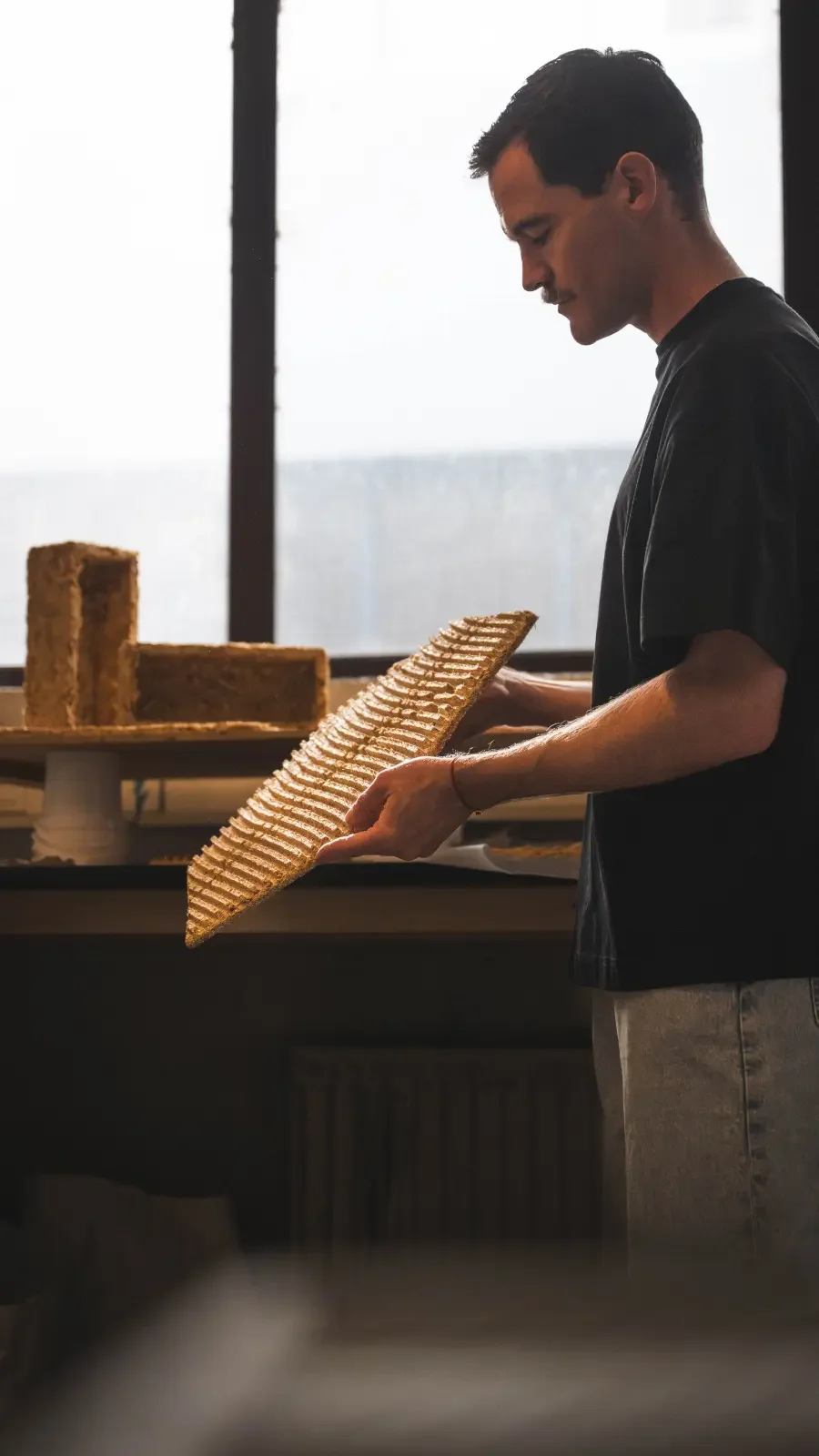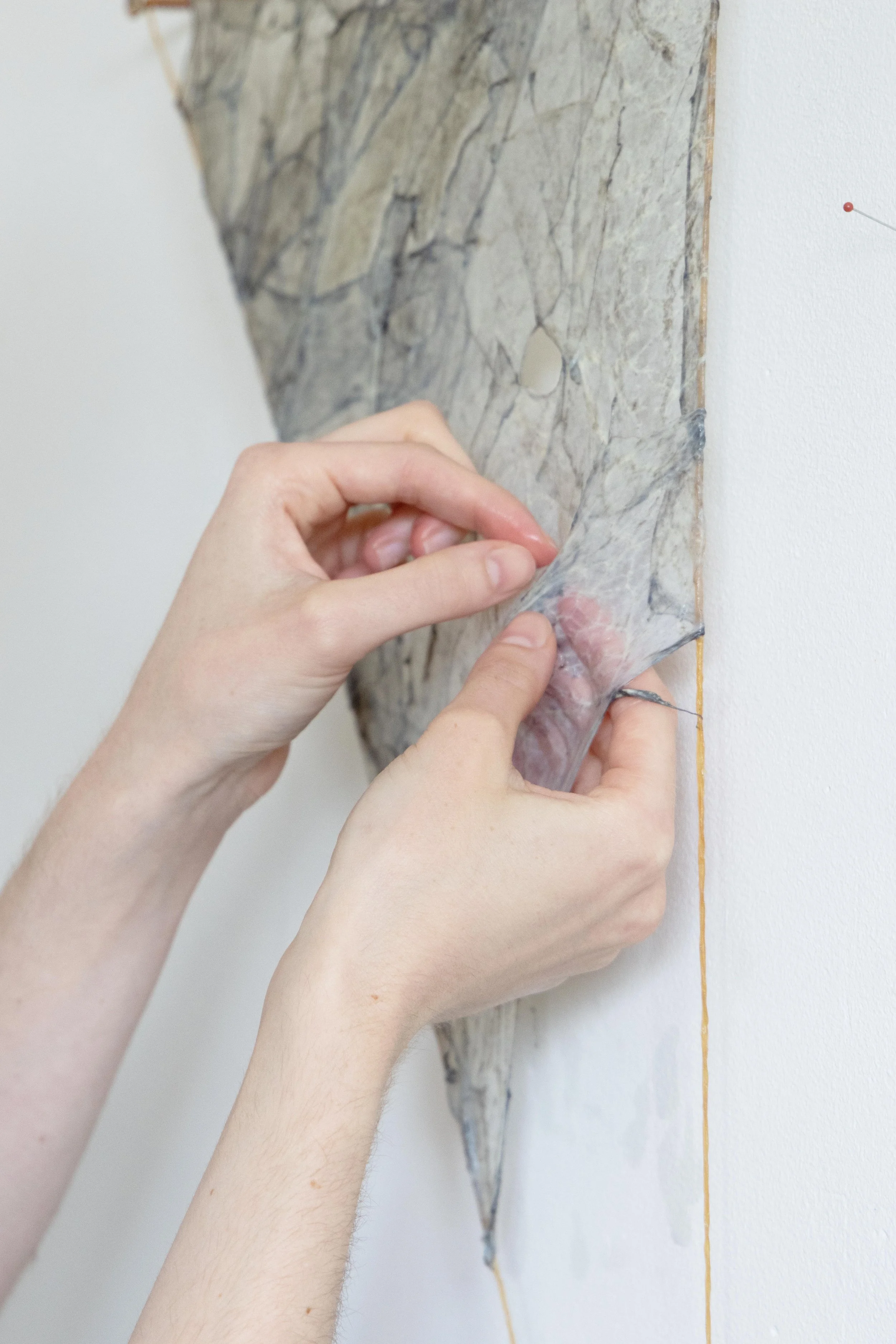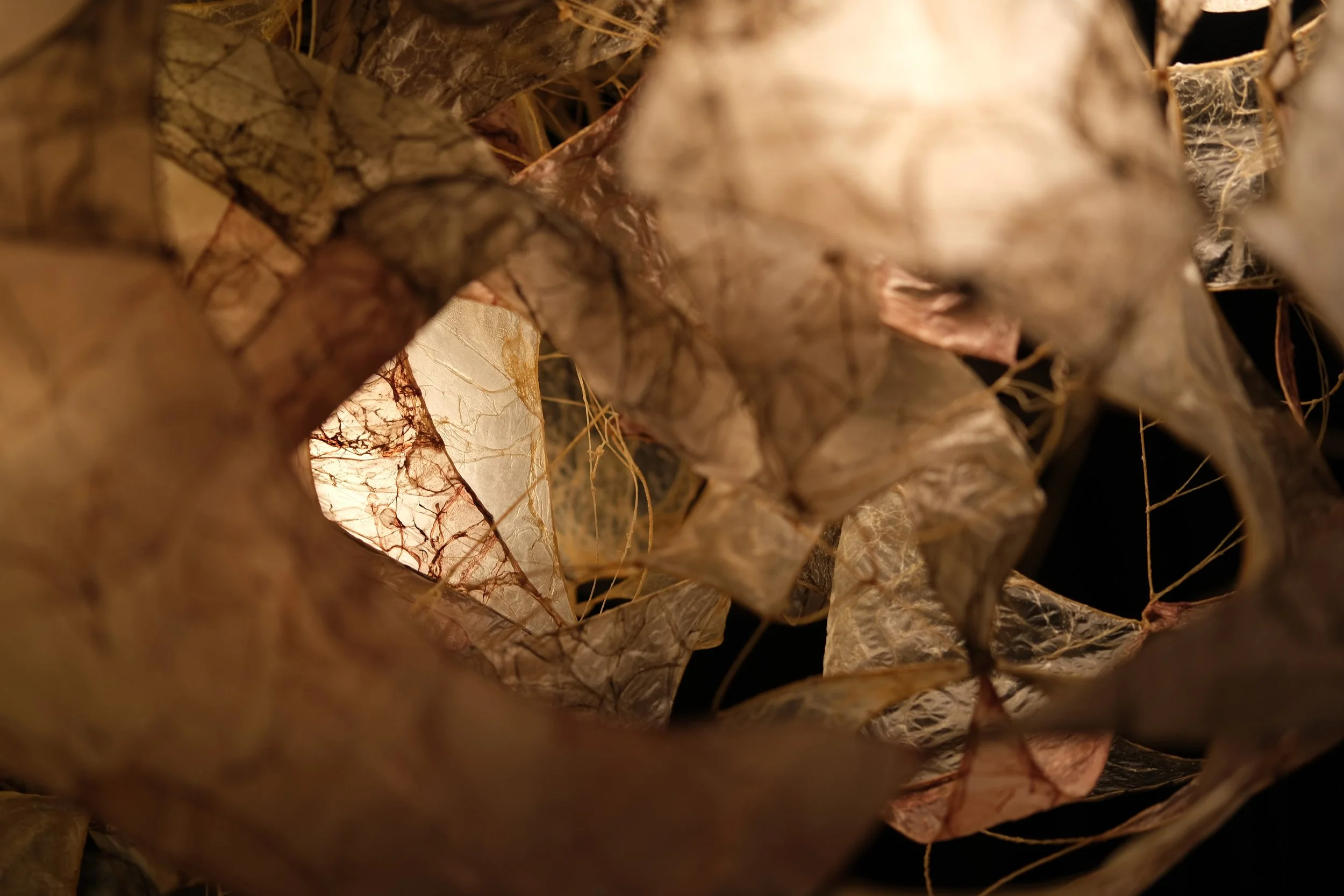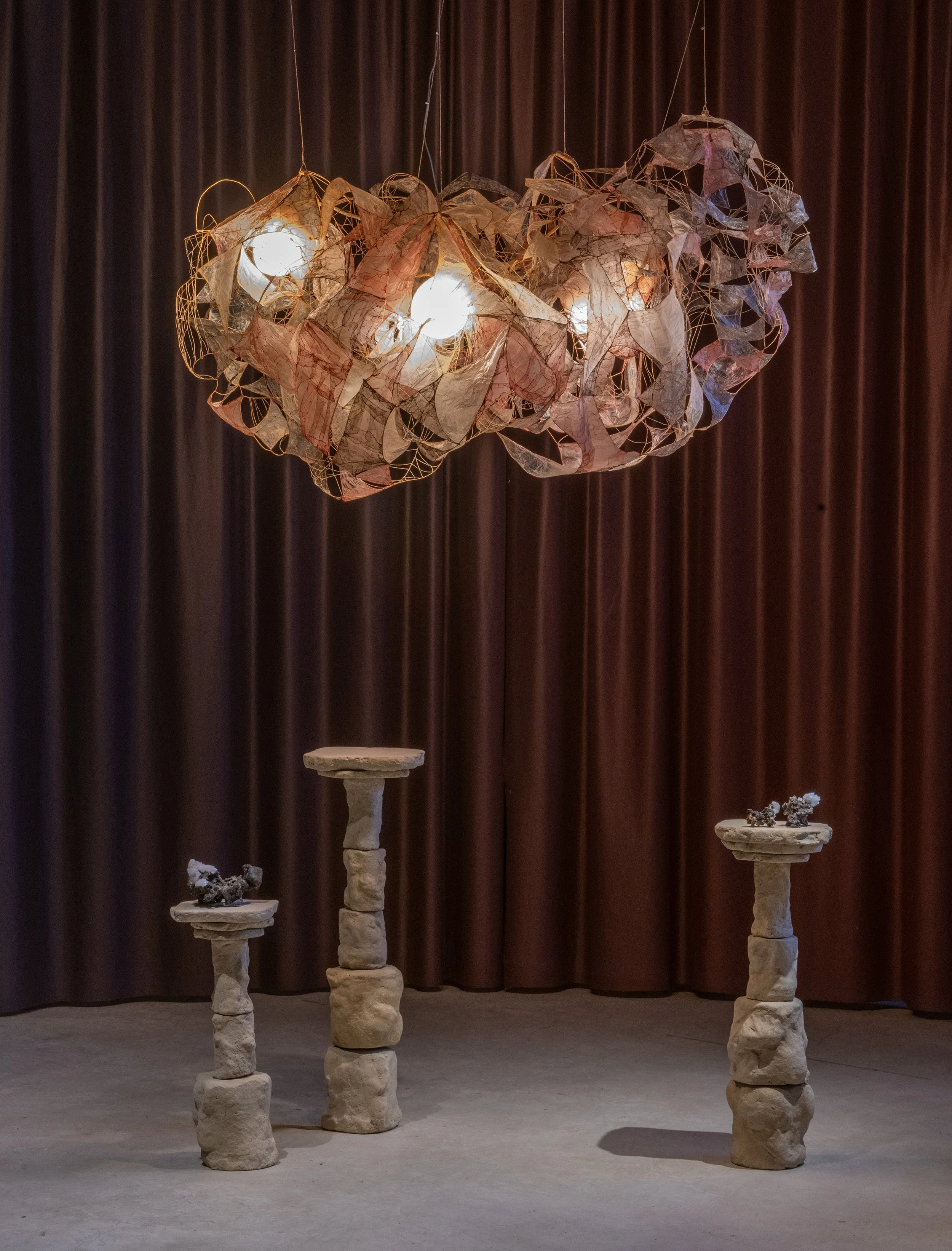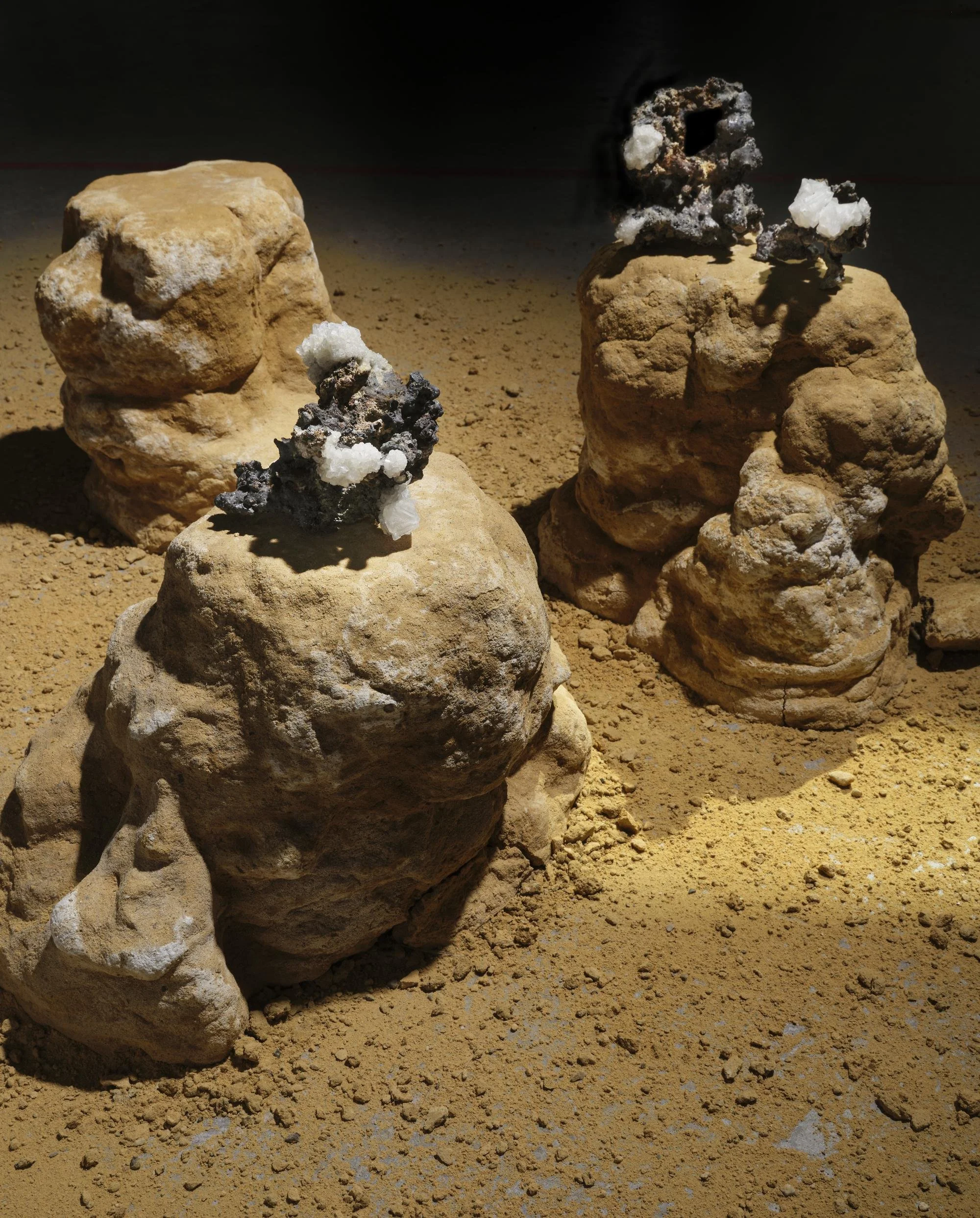Material Cultures
Design in relation with ecology and craft - Kazerne - Dutch Design Week 2025
Sympoiesis — a term introduced by feminist scholar and biologist Donna Haraway — means making-with. It reminds us that nothing is self-made or purely self-organising; all creation unfolds through entangled relationships. This idea resonates deeply with design — a field built on constant collaboration between minds, materials, and environments. Every thread, fibre, and fragment exists because of such exchanges: between human and nonhuman, soil and season, gesture and place.
At Dutch Design Week 2025, several projects at Kazerne explored these shared processes of creation. Instead of chasing innovation for its own sake, they turned attention to origins — to the quiet intelligence of materials and the relationships that sustain them. From growing flax and reimagining wheat straw to sculpting rocks, these works ask what happens when we stop designing for materials and begin designing with them.
Each material holds memory — of land, of labour, of time — and each demands a different kind of care. Together, these projects invite us to rethink value, production, and belonging within the wider ecological systems that make creation possible.
Back to the Flax
Back to the Flax — a design collective within Kazerne Young, formed by Design Academy Eindhoven students Coretin Berthomé, Elisabeth Teje Duis, Fabio Lucietto, Filip Kubiny, Guilain Delanoue, Karin Borovcová, Linde van Vliimen, Lucas van Vuuren, Mika Fuchs, Monique Colomb Simon, and Primo Arets — retraces the full life cycle of linen: from seed to fibre, from plant to thread.
On a 1,000 square meter plot of land in Gijzenrooi, the group cultivated, harvested, and processed flax entirely by hand, exploring both traditional and experimental methods. This project revives the rhythm of an ancient process that was once a part of daily life, including soaking, breaking, scutching, and spinning. What was once common knowledge has largely been forgotten, replaced by fast textiles and industrial production chains.
Through this hands-on approach, the collective examines how flax becomes linen, as well as the knowledge that is lost when we move away from the land. Their work bridges agricultural and cultural heritage.
Straw Return
In Straw Return, designer Isaac Monté and Eleni Karagiannidou of Staramaki S.A. look at what remains after harvest: the overlooked residues of wheat stems. Together, they transform this agricultural by-product — the waste of waste — into new, high-performance materials for design and interiors.
The project demonstrates how the hidden potential of the food system can be unlocked when by-products are treated as beginnings rather than ends. Using over a hundred material experiments and developing a fully natural biobinder, Monté’s composite panels show how straw can become both structure and sound absorber, replacing virgin materials in architectural contexts.
What makes Straw Return particularly relevant is its systemic view: food, agriculture, and design are not separate industries but part of the same cycle. The work proposes a model where waste is not eliminated but continuously reimagined.
The Coca Leaf Entanglement
In The Coca Leaf Entanglement, María Daniela Palomá turns to one of Colombia’s most misunderstood plants — the coca leaf. For centuries, it has been a sacred and everyday presence across the Andes: chewed to ease hunger, brewed to relieve altitude sickness, used in rituals of reciprocity between people and land. Yet beyond its native contexts, the plant’s image was violently transformed, reduced to a symbol of the drug trade and global conflict.
Palomá’s work unravels this distortion. Through embroidery, conversation, and collective mapping, she weaves together the stories that have been silenced by stigma. Threads become roots; stitches, connections. Each embroidered line traces a different relationship to the plant — from reverence to fear, from legality to survival. In this growing “counter-archive,” the coca leaf reclaims its agency as a cultural and material actor, rather than an object of control.
What emerges is not a fixed narrative but a living network of meanings — rhizomatic, fluid, and resistant to simplification. Palomá invites us to consider how design can operate as a form of cultural listening, one that acknowledges complexity instead of erasing it. The Coca Leaf Entanglement becomes both map and mirror: a reflection on how materials carry memory, identity, and power, and on what it means to repair a story that has been told too many times in someone else’s voice.
Between body and light
In Louvanes, Thibault Philip works with a material rarely seen in contemporary design: animal intestines. For centuries, these translucent membranes were part of everyday life, used to make vessels, waterproof clothings, and window coverings. From Alaska to Sudan, from Inuit seal bladders stretched into waterproof parkas to Sahelian hides turned into tents and vessels, countless anonymous makers once used similar materials — transforming what came from the body into tools of protection and survival. Across the Arctic, intestines were cleaned, inflated, and stitched into translucent raincoats; in northern Europe, they became window coverings that filtered light.
Such practices emerged from a close and practical relationship with animals and the environment — when taking a life also meant using every part of it. Nothing was discarded, and little was wasted.
Over time, these skills faded as industrial systems took over, separating and specialising every part of the animal. Intestines, once part of domestic craft, became limited to the food industry, where they serve mainly as casings for sausages.
Philip revisits this overlooked material, not as a provocation but as an inquiry into what is considered acceptable or valuable in design today. His use of animal membranes raises questions about scarcity, waste, and the boundaries between craft, industry, and ethics. In Louvanes, the familiar becomes unfamiliar again — a material once tied to necessity reappears in another context, suggesting that innovation sometimes lies less in invention than in re-seeing what already exists.
New Rocks
New Rocks, by Jules Péan, explores the geological imagination of design. Using stones, sand, and iron ore from Luxembourgish quarries, combined with waste construction materials, Pean recreates natural rock formations through processes of sedimentation, erosion, and crystallisation.
The results are both familiar and uncanny — coffee tables, side tables, and small artefacts that seem excavated rather than made. The materials are conditioned to decompose naturally, returning their minerals to the ground. By blending geological time with human time, New Rocks questions what it means to create something “new” when nature has been doing so for millennia.
Design as Accountability
These projects treat materials not as neutral matter, but as active participants in our shared systems of making. They remind us that every object carries traces of extraction, transformation, and care — and that design choices always shape those relationships.
To look back at origins, then, is not nostalgia; it is an act of sympoiesis — of making-with awareness. It acknowledges that no creation stands alone, that every material, gesture, and form emerges through interdependence. The question is not only how we design, but how we remain accountable to what enables design to exist in the first place — the soil, the bodies, the cycles we depend upon.
Info
Projects featured:
Back to the Flax — Coretin Berthomé, Elisabeth Teje Duis, Fabio Lucietto, Filip Kubiny, Guilain Delanoue, Karin Borovcová, Linde van Vliimen, Lucas van Vuuren, Mika Fuchs, Monique Colomb Simon, and Primo Arets (Design Academy Eindhoven / Kazerne Young)
Straw Return — Isaac Monté and Eleni Karagiannidou (Staramaki S.A.)
The Coca Leaf Entanglement — María Daniela Palomá
Supported by Creative Industries Fund NL
Louvanes — Thibault Philip
New Rocks — Jules Péan
Photography: Ruud Balk
Exhibited at Kazerne, Dutch Design Week 2025





